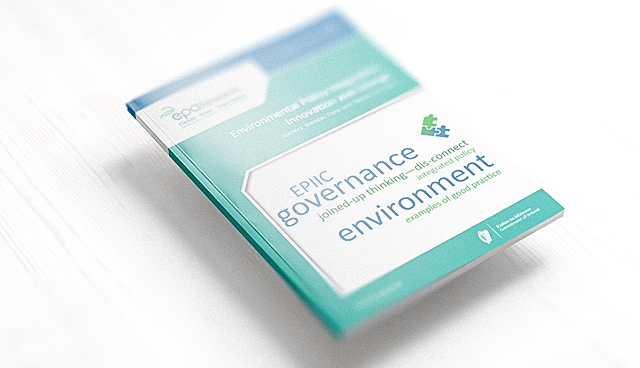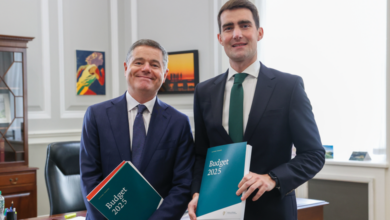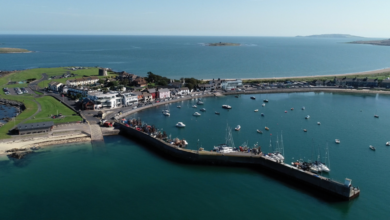A new ‘greener’ government or a government of ‘silos’?

Research finds Ireland can improvise well in a major crisis, but its ‘silo mentality’ is a barrier to long-term environmental planning. With three jostling parties making up the government, one must consider policy coherence, cooperation and implementation. Will this be a government of ‘silos’? NUI Galway Ryan Institute researchers Pádraic Ó hUiginn and Brendan Flynn write.
Following the agreement by Fianna Fáil, Fine Gael and the Green Party to go into government, with the election of An Taoiseach, Micheál Martin TD by the Dáil, then the subsequent cabinet appointments; and after a protracted day of would-be junior ministers being appointed, declining appointments and protesting at not being appointed, there emerged the new layout of government departments and their ‘silos.’
A major challenge for this government combination, particularly for An Taoiseach and the Government Chief Whip is that it does not become a government of silos. It has inherent risks of each party operating as a government within government. This will become more pressing when it comes to agreeing a budget this autumn, the timing and sequencing of positive announcements, or not wanting to be associated with bad news announcements.
The challenge of siloisation is not unique to Ireland or to environmental policy. The image of a silo has been used to describe how modern governments have tended to overspecialise into very many small sub-departments or sections, dominated by their civil service experts. Inside the silo, policies are forged and delivered, but outside each ‘silo’ it is a different story. The inevitable cross-departmental connections with other issues and the bigger picture often get left aside. The result is usually fragmented policy, and sometimes government action under one heading gets actively undermined by another government policy from a different branch.
Climate action, in particular, requires joined-up policymaking to be effective and to ensure that there is a ‘just transition’. It is disjointed if we have a Green Party Minister for Transport who makes progress de-carbonising our mobility but can’t exert leverage on the Minister for Agriculture to reduce emissions from our food production system. Within this, there is also the strategic economic question around Ireland’s farming emissions being proportionally larger than other EU neighbours that have much larger heavy industry and its associated greenhouse gases emissions. Do we risk excess focus on agricultural/agri-food emissions, that ultimately hampers our capacity for economic recovery and leads to ‘carbon leakage’ etc. through food imports from countries with less sustainable production? Equally, there is a risk that ambitious green measures could undermine other valid policy objectives, on mobility, health and social inclusion.
The EPIIC1 (‘epic’) initiative explored how well environmental policy is integrated into Ireland’s system of government and public administration. It examined Irish environmental governance in its current state, to identify where there may be so-called disconnects and to find examples of integration and joined-up thinking. The bottom line from the EPIIC research is that there’s already a lack of joined-up thinking, action and funding across Irish agriculture, energy, transport, climate, marine and other sectors.
“The bottom line from the EPIIC research is that there’s already a lack of joined-up thinking, action and funding across Irish agriculture, energy, transport, climate, marine and other sectors.”
It is our view, and our research indicates all of this might only become worse with such a complex, three-party coalition, which at the same time is promising so much on climate action and the environment. In an already siloised system, are we facing into a period of mini governments within government, with each party doing its own thing? If the new Government is going to deliver on what it promises for climate change, environment and sustainability, it’s going to have face down the problem of government by silo.
The good news, as the EPIIC report on Environmental Policy Integration makes clear, is that there are a set of quite simple measures that could be taken to reduce this problem and improve coherence. Some of these involve methods to get the silos to interact with each other. EPIIC looked at emergency responses, how they’re dealt with in the short-term, and how they impact the long-term. The research found that Irish policies for energy poverty and conservation were quickly and creatively developed, even in the face of the 2008 financial crisis.
The research identified areas of cross-sectoral pressures on the Irish environmental policy system and the gaps and opportunities for joined-up thinking. 38 interviews, across three jurisdictions, aimed to give voice to the experiences, insights and learnings of those on the frontline of environmental policy delivery.
Throughout the process, the 38 interviewees expressed strong views on a lack of environmental data sharing, on the suitability of voluntary agreements that aim to go beyond compliance, and the importance of subsidies, specifically feed-in tariffs, for new renewable technologies in Ireland such as anaerobic digestion or biogas.
Interviewees suggested that awareness of the Environmental Policy Integration concept was limited because of a ‘silo mentality’. It suggested that the State could engage more with the citizen to achieve buy-in when formulating responses for the long run. This will require institutional change, adaptation, and evolution along with a dedicated ‘network agent’ to broker formal policy networking.
Environmental Policy Integration is not a new concept, nor is it unique to Ireland, but the EPIIC project showed how it requires a renewed effort to ‘mainstream’ environmental and climate concerns into all other policy sectors, notably into agriculture, energy, transport, and health. The research commended policy ‘champions’ for using this approach including specialist agencies, larger multinational firms as well as not-for-profit NGOs.
Our view is that this research is more relevant than ever right now. Our approach was to explain how policymaking is increasingly having to improvise in a global era of disruption and that was long before Covid-19. However, with the scale and lethality of the Covid-19 pandemic, there is not just an opportunity but a necessity to get joined-up policies working. The EPIIC research explains how, for example, retrofitting for energy conservation was so successful in getting silos ranging from health to energy to jobs working together, during the last great recession from 2008 to 2013. The EPIIC report finds that that success story can be replayed and built upon.
|
1. EPIIC was published as part of the EPA Research Programme 2014–2020. The programme is financed by the Irish Government. It is administered on behalf of the Department of Communications, Climate Action and the Environment by the EPA, which has the statutory function of co-ordinating and promoting environmental research. A summary of EPIIC and its report are available here from the EPA website: This is a follow-on article from the article published on eolas Magazine online edition, July 2020. |
Our research showed that a time of increased demand on decreased public finances can be a time for more environmental policy innovation, rather than not. Evolutionary change and adaptation rather than revolutionary change is stressed. We suggested some of the following.
- Engage much more with the general public who naturally want policy to be more joined-up than experts or interest groups.
- Rather than creating new institutions, a network agent, such as the National Economic and Social Council (NESC), if placed in the Department of the Taoiseach, could broker policy integration.
- Directly involve state agencies who work on the frontline of policy implementation in cross-functional efforts to solve ‘wicked’ problems, rather than traditional inter-departmental working groups where mostly only the officials from their ‘parent’ departments participate.
- Further empower and resource existing agencies that are policy champions for a more joined-up environmental effort (e.g. Sustainable Energy Authority of Ireland, Heritage Council, CODEMA, Teagasc, EPA, etc.).
- Prioritise attention and resources for the National Transport Authority and Regional Waste Management Offices to move towards a more joined-up agenda.
- The planning system needs to become more joined up. It could, for example, embrace green infrastructure concepts and use Transport Impact Assessments. Covid-19 era social distancing on our footpaths, and for cyclists, may yet act as an unexpected impetus for some of these.
- There needs to be a focus on sharing data between state and public agencies rather than hoarding data. A dedicated EPA data analytics/mining team could do this.
“[The National Mitigation Plan] and the more recent Climate Action Plan have taken steps towards a ‘whole of government’ approach. More of this whole of government and bridging of ‘silos’ approach will be essential to progress.”
A balanced toolbox of environmental instruments should be promoted: not just taxes and subsidies, especially proven feed-in tariffs, but also carbon certification and labelling schemes for food, and policies that involve the citizen in design and delivery.
The challenge of overcoming siloisation becomes more pressing in the Covid-19 era, as the responses to the global pandemic themselves require joined-up thinking and delivery. In the ongoing pandemic disruption, the environmental and climate imperatives remain, and arguably become more pronounced.
Just as Dáil Éireann headed on its summer recess, the Supreme Court delivered its judgment in the Friends of the Irish Environment challenge to the National Mitigation Plan. It seems that the new Government will need to re-visit its predecessor’s first National Mitigation Plan (the ‘Plan’) (required under Section 4 of the Climate Action and Low-Carbon Development Act 2015 (the ‘Act’). Whilst the Supreme Court judgment held that the Plan did not have the “level of specificity” required to comply with the Act, and focused on the interpretation of the Act (part of its remit), rather than the Plan’s policy content; it is highly likely that the next iteration of a Plan will again require direct input from many government officials and state agencies to agree and set out detailed targets or risk further exposure to legal challenge. This Plan and the more recent Climate Action Plan have taken steps towards a ‘whole of government’ approach. More of this whole of government and bridging of ‘silos’ approach will be essential to progress.
Our view is that the EPIIC report offers a Tripadvisor-type travel guide for those in government and public administration faced with the daunting challenges of delivering joined-up environmental policies. It offers tips on the ‘must see’ and ‘best to avoid’ routes to policy integration, from those who’ve ‘been there’. It remains to be seen if this new government will be a government of silos, but the EPIIC synthesis report is available as a helpful guide to the policymakers and decisionmakers to navigate the journey.





